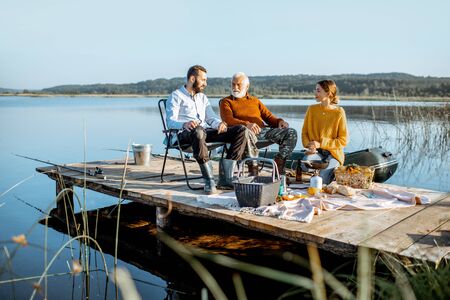1. Why Sustainable Camping Matters
More and more campers across the U.S. are realizing that enjoying the great outdoors comes with a responsibility to protect it. Sustainable camping is all about minimizing our environmental impact while still having an amazing time in nature. From reducing waste to using clean energy sources like solar power, making eco-friendly choices helps preserve our parks, forests, and natural spaces for future generations.
Camping has long been a way for Americans to unplug from daily life and reconnect with nature. But now, with growing awareness of climate change and environmental issues, outdoor enthusiasts are starting to rethink how they camp. Traditional camping gear often relies on disposable items or fossil fuels, which can leave a bigger footprint than many realize. That’s why sustainable camping is gaining popularity—because it aligns with the values of people who love and respect the outdoors.
How Solar Power Fits Into Eco-Friendly Camping
One of the most impactful changes you can make is switching to solar-powered gear. Portable solar panels and solar generators let you charge your phone, lights, or even small appliances without relying on gas-powered generators or car batteries. It’s quieter, cleaner, and better for the planet.
Benefits of Using Solar Power While Camping
| Traditional Power Sources | Solar Power |
|---|---|
| Gas-powered generators (noisy & emit fumes) | Silent operation with zero emissions |
| Batteries that need frequent replacement | Rechargeable using sunlight |
| Limited charging options | Multiple USB and DC ports for devices |
The Shift Toward Eco-Conscious Adventures
Sustainable camping isn’t just a trend—it’s becoming a core value in the outdoor community. Campgrounds are starting to offer recycling bins, solar hookups, and eco-education programs. Outdoor brands are designing gear made from recycled materials or offering solar-compatible products. And campers themselves are choosing destinations based on their environmental practices.
No matter where your next adventure takes you—from the mountains of Colorado to the beaches of California—embracing sustainability helps ensure those places stay beautiful and wild for years to come.
2. The Role of Solar Power in Modern Camping
Solar power is changing the way campers experience the great outdoors. As more people seek eco-friendly and off-grid adventures, solar technology has stepped up to provide clean, renewable energy without sacrificing comfort or convenience. From charging your phone deep in the woods to powering a mini fridge at your campsite, solar energy is now an essential part of modern camping.
Why Solar Power Is a Game-Changer for Campers
Traditional camping often relies on gas generators or disposable batteries, which can be noisy, heavy, and harmful to the environment. Solar power offers a quiet, lightweight, and sustainable alternative. With solar gear becoming more portable and efficient, it’s easier than ever to stay powered up while reducing your carbon footprint.
Common Solar-Powered Gear for Camping
Here are some popular solar-powered tools that are making off-grid camping more enjoyable and sustainable:
| Device | Description |
|---|---|
| Portable Solar Panels | Foldable panels that can charge phones, tablets, and even power stations during the day. |
| Solar Generators | Battery banks charged by solar panels; great for running lights, fans, or small appliances. |
| Solar Lanterns | Rechargeable lanterns that provide hours of light using sunlight—no batteries needed. |
| Solar Showers | Bags that heat water using the sun’s rays—perfect for warm showers at remote sites. |
| Solar Backpacks | Packs with built-in solar panels to charge devices while you hike. |
Benefits of Using Solar Energy While Camping
- Sustainability: Reduces reliance on fossil fuels and minimizes waste from disposable batteries.
- Portability: Most solar gear is lightweight and easy to pack.
- Quiet Operation: Unlike gas generators, solar devices run silently—preserving nature’s peace.
- Cost-Effective: After the initial investment, solar power is free to use again and again.
Real-Life Use: A Day in the Life of a Solar-Powered Camper
You wake up with the sun. Your solar lantern dims as daylight fills your tent. You plug your phone into a portable panel while you make breakfast. Later, your solar-powered cooler keeps drinks chilled as you explore nearby trails. At night, soft LED lighting from your charged lantern lets you wind down with a book—all without plugging into the grid. That’s the beauty of integrating solar into your camping lifestyle.

3. Top Solar Gear Every Camper Should Consider
Whether you’re a weekend warrior or a full-time vanlifer, choosing the right solar-powered gear can make your camping trips more comfortable and eco-friendly. From charging your devices to lighting up your campsite and even cooking meals, solar technology has come a long way — and it’s now more accessible than ever. Here’s a breakdown of essential solar gear that every camper should have on their packing list.
Solar Chargers
Keeping your gadgets powered up is crucial when youre off the grid. Solar chargers are lightweight, portable, and can keep everything from your phone to GPS running smoothly. Look for models that are waterproof, durable, and compatible with multiple devices.
| Product | Key Features | Best For |
|---|---|---|
| BigBlue 28W Solar Charger | Foldable design, USB ports, weather-resistant | Backpackers & hikers |
| Anker PowerPort Solar Lite | Compact size, fast charging, durable fabric | Day trips & light use |
Solar Lights
Shed some light on your adventure without relying on batteries or fuel. Solar lanterns and string lights not only brighten your space but also create a cozy atmosphere at night.
| Product | Type | Features |
|---|---|---|
| Luci Outdoor 2.0 by MPOWERD | Inflatable Lantern | Waterproof, collapsible, lasts up to 24 hrs |
| Luminoodle Solar String Lights | String Lights | Rechargeable battery, USB output, mood lighting |
Solar Cooking Devices
If you want to go all-in on sustainable camping, consider using the power of the sun to cook your meals. Solar ovens are an awesome alternative to propane stoves — they’re clean, safe, and surprisingly efficient.
| Product | Cooking Method | Main Benefits |
|---|---|---|
| GoSun Sport Solar Cooker | Tubular Oven | Cooks in under 30 min, no fuel needed, portable design |
| SOL COOK All-American Sun Oven | Box Oven | Bakes and boils, adjustable reflectors for max heat control |
The Bottom Line on Gear Choices
Packing the right solar-powered gear not only helps reduce your carbon footprint but also adds convenience and reliability to your outdoor adventures. With just a few smart investments, you can enjoy the freedom of off-grid camping while staying connected and comfortable.
Quick Tips:
- Check compatibility: Make sure chargers work with your devices.
- Monitor sunlight hours: Place panels where they’ll get maximum exposure.
- Go multi-functional: Choose gear that serves more than one purpose.
4. How to Set Up a Solar-Friendly Campsite
Creating a solar-friendly campsite is easier than you might think. With a few smart strategies, you can power your gear sustainably while enjoying the great outdoors. Here’s how to make your campsite solar-ready.
Pick the Right Spot
Location is everything when it comes to solar power. You’ll want to choose a campsite with plenty of direct sunlight throughout the day. Avoid areas with heavy tree cover or tall cliffs that might cast long shadows, especially in the morning and late afternoon.
Ideal Sun Exposure Times
| Time of Day | Sun Position | Best Placement Tip |
|---|---|---|
| Morning (7 AM – 10 AM) | Low in the East | Face panels toward the sunrise |
| Midday (10 AM – 2 PM) | High overhead | Lay panels flat or slightly tilted south |
| Afternoon (2 PM – 6 PM) | Lower in the West | Adjust angle toward setting sun |
Use Portable Solar Gear Wisely
The most common solar gear for campers includes foldable solar panels, solar lanterns, and portable battery packs. Set up your panels as soon as you arrive at camp so they can start charging right away.
Pro Tips:
- Angle your panels: Tilt them toward the sun for max efficiency—roughly 30°–45° depending on your location.
- Avoid shade: Even partial shading can drastically reduce output.
- Keep them clean: Wipe off dust or leaves that may block sunlight.
Store and Manage Your Power
You’ll need a way to store all that solar energy for nighttime use. A good portable power station or high-capacity battery bank is essential. Make sure it has enough capacity to charge your devices overnight and during cloudy days.
Basic Solar Power Setup Guide
| Item | Description | Why It Matters |
|---|---|---|
| Solar Panel (60-100W) | Catches sunlight and converts it to electricity | Main energy source during the day |
| Portable Power Station (300Wh+) | Stores energy for later use | Keeps devices running at night or when cloudy |
| USB/12V Devices | Lamps, fans, chargers, etc. | Makes energy usage efficient and versatile |
Create a Charging Routine
The best way to stay powered up is to develop a habit of charging during peak sun hours. Plug in devices like phones and lights early in the day so you don’t drain your batteries after sunset. Rotate devices if needed to keep everything topped off.
Quick Tips:
- Mornings: Charge power banks and larger items.
- Noon: Recharge anything used heavily in the morning like GPS units or cameras.
- Evening: Use stored power wisely; switch to low-power modes if available.
A well-planned solar setup not only reduces your environmental impact but also gives you peace of mind knowing you’ve got reliable power wherever your adventures take you.
5. Real Stories: Campers Going Green Across America
Across the United States, more and more campers are making the switch to solar power as a way to enjoy nature without leaving a trace. From coast to coast, outdoor enthusiasts are sharing how solar technology has transformed their camping experiences — making them more sustainable, convenient, and connected. Here are some real-life stories from campers who’ve embraced solar-powered camping.
California: Off-Grid in the Sierra Nevada
Meet Jenna and Mike, a couple from San Diego who spend several weekends each year exploring the Sierra Nevada Mountains. They outfitted their teardrop trailer with a 200-watt solar panel system and a portable power station. “We no longer worry about running out of battery for our phones, lights, or even our electric cooler,” says Jenna. “It’s amazing to be in the middle of nowhere and still have the essentials powered by the sun.”
Colorado: Mountain Life Made Easier
Tyler, an avid solo backpacker from Boulder, uses a lightweight solar charger strapped to his hiking pack. He powers his GPS device, headlamp, and phone while trekking through remote areas of the Rockies. “Before I went solar, I had to carry multiple backup batteries,” he explains. “Now I just harness sunlight during the day — it’s simple and saves weight.”
Florida: Beach Camping Without Limits
The Ramirez Family loves weekend trips along Florida’s Gulf Coast. They installed flexible solar panels on their RV roof and now enjoy beachfront camping with all the comforts of home — fans, lighting, and even a small blender for smoothies. “Solar lets us camp longer without hookups,” says Maria Ramirez. “We feel better knowing we’re being eco-friendly too.”
Minnesota: Cold Weather Charging Success
Derek, an ice fishing enthusiast from Duluth, shares how his 100-watt solar setup helps him power heated blankets and LED lights inside his winter tent shelter. “Even in low sunlight conditions, my panels charge enough during the day to keep me comfortable at night,” Derek says.
How Campers Are Using Solar Power Across Regions:
| Region | Solar Setup | Main Uses | User Benefit |
|---|---|---|---|
| West (CA) | Roof-mounted panels + power station | Lighting, fridge, mobile devices | Off-grid convenience |
| Mountain (CO) | Portable fold-out panel & USB charger | GPS, phone, headlamp charging | Lightweight & reliable energy source |
| Southeast (FL) | Flexible RV panels + inverter system | Fans, lights, kitchen appliances | Extended stay at beach sites |
| Midwest (MN) | 100W panel + battery bank | Tent heating & lighting in winter camping | Sustainable cold-weather comfort |
The Takeaway from Real Campers:
No matter where you are in the U.S., solar-powered camping is becoming more accessible and practical than ever before. These camper stories show that going green doesn’t mean giving up comfort — it means gaining freedom, self-reliance, and peace of mind while preserving the great outdoors.


